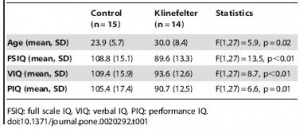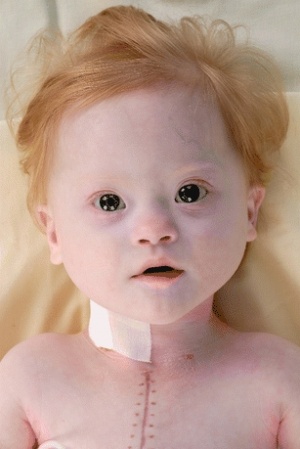Talk:2011 Group Project 3
Group 3: User:z3289066 | User:z3289301 | User:z3289829 | User:z3289991
Plagiarism
--Mark Hill 07:35, 30 September 2011 (EST) Currently all students originally assigned to each group are listed as equal authors/contributors to their project. If you have not contributed the content you had originally agreed to, nor participated in the group work process, then you should contact the course coordinator immediately and either discuss your contribution or request removal from the group author list. Remember that all student online contributions are recorded by date, time and the actual contributed content. A similar email reminder will be sent to all current students.
Please note the Universities Policy regarding Plagiarism
In particular this example:
- "Claiming credit for a proportion of work contributed to a group assessment item that is greater than that actually contributed;"
Academic Misconduct carries penalties. If a student is found guilty of academic misconduct, the penalties include warnings, remedial educative action, being failed in an assignment or excluded from the University for two years.
2011 Projects: Turner Syndrome | DiGeorge Syndrome | Klinefelter's Syndrome | Huntington's Disease | Fragile X Syndrome | Tetralogy of Fallot | Angelman Syndrome | Friedreich's Ataxia | Williams-Beuren Syndrome | Duchenne Muscular Dystrolphy | Cleft Palate and Lip
Discussion
Hey Guys, I have added a discussion tab for any enquires and updates on the progress of our assessment, as well as a referencing tab (or whatever they are actually called) at the bottom of the page. So for each section, if anyone finds relevant articles/images etc. they can place it there. Oh, and please remember to add new content to the top. --Souti Khalil 00:53, 18 August 2011 (EST)
Hey Guys, Sorry to be a bother. I am having trouble referemcing properly in the Wiki format, as what can be seen in my Epidemiology piece and also my messing up of the reference list. Would one of you mind showing me how to fix this problem? Thanks so much and I will have the piece on 'other similar defects' prepared by Saturday. The glossary will be uploaded on Monday. --Robert Klein 05:40, 18 August 2011 (EST)
References
If you find any good papers relating to someone elses topic, you can put them under these subheadings to help out.
Description/Introduction
History
Signs and Symptoms
Epidemiology
Abramsky L, Chapple J.47, XXY (Klinefelter syndrome) and 47,XYY: estimated rates of and indication for postnatal diagnosis with implications for prenatal counselling. Prenat Diagn. 1997;17:363–368.
Bojesen A, Juul S, Gravholt CH.Prenatal and postnatal prevalence of Klinefelter syndrome: anational registry study. J Clin Endocrinol Metab. 2003;88:622–626
Diagnosis
Hey guys, it's Dona. I put my name down for this section. I will try to get mine done by the end of this week. :)
--Dona Cho 17:23, 24 August 2011 (EST)
Treatment
Etiology
Pathogenesis
Case Study
Similar Defects
Current Research
Pictures
--Souti Khalil 23:57, 17 August 2011 (EST)
--Elisabeth Karsten 23:31, 13 August 2011 (EST)
--Robert Klein 10:17, 16 August 2011 (EST)
--Dona Cho 20:35, 17 August 2011 (EST)
Topic Choice
Hey guys, so after having a look at that list I quite like the sound of
- Anencephaly or
- Klinefelter's syndrome
There's loads of resources for Klinefelter's syndrome, but I think Anencephaly sounds really interesting. It's a type of neural tube defect, so we may even be able to do that as a topic - neural tube defects (it's on the list as well). Just let us know what you think, thanks guys!
I've just attached a review for each
Neural Tube Defects or Anencephaly
--z3289066 09:32, 6 August 2011 (EST)
Hey Everyone, I am leaning towards Klinefelter syndrome as it seemed interesting to learn about. I found a couple of articles on the internet which explore more the epidemiology of the condition amongst the population. Liz, I read through your artiles and they were quite interesting in the way that they explored the genetics behind the condition. We will be able to perhaps link these in with the epidemiology to make our argument more convincing.
Below is a review article:
The Research Article:
Both articles explore more the epidemiology of klinefelter's syndrome as I felt that it would be interesting to look at its prevalence, and frequency of distribution within a population. The first review article that I hasve linked to explores the frequency of Klinefelter's syndrome in a population along with various other genetic anomalies.
--z3289991 07:02, 9 August 2011 (EST)
Yeh that sounds good to me, if anyone has any objections just let us know. We can figure out exactly what we want in the page on thursday, but yeh should def's talk about the epidemiology.
--z3289066 14:53, 9 August 2011 (EST)
Hey guys!
I think that Klinefelter's syndrome is definitely an interesting disease and it has lots of resources. I think we still need a plan B though, a few other diseases which I thought were really interesting are; - Thalassaemia - Anencephaly (good pick Liz!) - Spina Bifida I found a really good review article on Klinefelter’s syndrome, although it’s pretty dated. [3] [4]
I shall see you all thursday!
--z3289829 22:15, 9 August 2011 (EST)
Hey guys, this is dona - I guess I am the last one to write on the board (sorry!)
I personally like the topic; neural tube defects. Reasons are 1. there is so much information because it is an umbrella term that includes many conditions like spina bifida and anencephaly and 2. we will be learning the developing of the neural tube next week in lecture - so it will not be difficult to understand the etiology of neural tube defects
Here are the links:
review article [5]
research article [6]
p.s Hey could everyone identify themself by writing their name before writing on this discussion forum, that way people know whose talking. (please)
--Z3289301 17:23, 10 August 2011 (EST)
Sections
- Description/Introduction - Liz
- History - Souti
- Signs and Symptoms - Dona
- Epidemiology - Rob
- Treatment - Liz
- Eitology - Souti
- Pathogenesis - Dona
- Similar defects - Rob
I was thinking it'd be good to also do a topic on recent research, I'm happy to do that one, and should also do a glossary. So we should have someone finalise that, but it'd be really helpful if everyone could just add words in they think would be good as you go. Does anyone want to volunteer for editing that? Just put your name in the spot below so everyone knows.
- Recent research - Liz
- Glossary - Rob
- Diagnosis - Dona
- Case Study - Souti
--Elisabeth Karsten 12:15, 13 August 2011 (EST)
Hey Guys,
I have uploaded an image to the Epidemiology section of the Group webpage, however it appears to have distorted the whole webpage in that all the other categories below epidemiology have been pushed to the side. Also, I am having trouble trying to enlarge the image. Do you know how I can fix this problem? The table was referenced appropriately.
Cheers
--z3289991 10:14, 13 August 2011 (EST)
Hey, yeh that should be fine for the moment, don't worry too much about the formatting. You can fix it, but it'll be easier to do once there's text there too move around it. There should be a page explaining all the details about picture formatting, but I can't qutie remember how to do it off the top of my head. Is that the size of the original image? Because that could be part of the problem.
--Elisabeth Karsten 12:09, 13 August 2011 (EST)
Oh I've just realised what's happened, see how you've put the file name then "thumb"? The default for thumb is to make it slightly smaller and move to the right where it will wrap around whatever text is there. You can try [File name|thumb|left|name] if you want it on the left, or else instead of 'left' you can say 'center'. But it's gotta be 'center', not 'centre' (I think). Or else you don't have to use thumb at all, and just leave it out completely.
Hope this helps.
--Elisabeth Karsten 14:02, 13 August 2011 (EST)
Thanks Liz, You know what? I will add some text during next week and then play around with the formatting. You are right in your first comment, because that way I can format the picture and text properly. Thanks so much for your help though. --Robert Klein 15:21, 13 August 2011 (EST)



